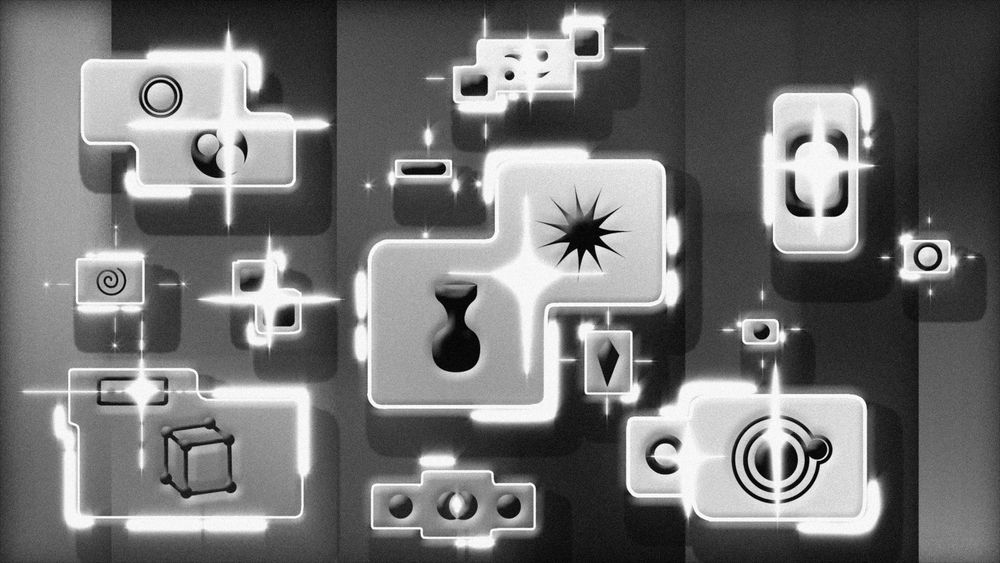Are you grappling with the complexity of UI frameworks like React design patterns? Understanding the best practices and benefitting from React design patterns is essential for every developer in the field of UI frameworks. This blog will offer you the valuable insights you need to navigate and utilize React design patterns effectively, helping you enhance your skills and improve your processes.
Magic UI's React component library can be your go-to solution. It provides an array of components and functionalities to help you learn and apply React design patterns and best practices efficiently. By leveraging Magic UI, you can gain hands-on experience and enhance your development process, all while mastering the ins and outs of React design patterns. With this resource, you can bring your projects to life with ease, leveraging the best practices in React design patterns.
What Are React Design Patterns?

Design Patterns are the pre-built templates that help create websites and mobile applications efficiently. In simple terms, design patterns are the proven solutions to resolve common application problems and development challenges.
Efficiency, Maintainability, and User Experience
React design patterns ensure proficient code organization and reusability. This collectively leads to faster development, uniform design, and fewer errors, ultimately enhancing the overall user experience. React design patterns enable you with new functionalities or features without hampering the existing codes.
Long-Term Advantages of Organized Code
Using React design patterns smooths your development process and keeps your app functional for the long run. Thus, we can infer that React design patterns are not just a solution to introduce a new feature and fix issues; they are like finding your favorite book on a well-organized bookshelf.
Related Reading
- What Are UI Components
- What Are UI Components
- What Is A Component Library
- React Libraries
- React CSS Framework
- Component Libraries
- React Best Practices
What Are The Benefits Of Using Design Patterns In React

1. It Provides Structure for Collaborative Development
React is known for being a flexible development environment, allowing developers to mix and match different development approaches. Multiple React developers collaborating on a project can lead to some challenges. Design patterns provide a much-needed structure to guide collaborative development and ensure consistency in coding styles and practices.
2. Enhances Code Organization
Design patterns offer systematic and methodical ways to write code, making maintaining and managing large React applications easier. By following predefined solutions to common problems, developers can improve the organization of their codebase and streamline the development process.
3. Encourages Reusability
React design patterns come with reusable templates and components, promoting reusability across different parts of the application. This saves time and effort by eliminating the need to reinvent the wheel for every new feature and ensures consistency and reliability in the codebase.
4. Promotes Maintainability
Using design patterns in React can lead to more modular and decoupled code, making it easier to maintain and update the application. By separating concerns and promoting code readability, design patterns help developers understand and modify the codebase more effectively.
5. Helps in Performance Optimization
Design patterns like memoization in React can optimize performance by reducing expensive calculations and unnecessary renders. By leveraging these design patterns, developers can enhance application performance and improve user experience.
Free and Open-Source UI Library for Design Engineers
MagicUI is a free and open-source UI library designed specifically for design engineers. It offers a collection of over 20 animated components built with React, TypeScript, Tailwind CSS, and Framer Motion.
Use our React component library for free today at https://magicui.design/docs.
8 Top React Design Patterns

1. High Order Components
The High-Order Components (HOC) are reusable logic within the React components. This popular React design pattern allows your development team to add functionality or features to your React application without changing their original code.
For instance, you have an “Apply now” button in your React application; you want to add color when someone clicks “Apply now.” With HOC, you can add a new color without modifying the original component. HOC helps to keep code organized and avoid code duplication. Leveraging HOC in React application development leads to scalable and agile software products.
Code Structure of High Order Components:
import React, { Component } from "react"
const HigherOrderComponent = (DecoratedComponent) => {
class HOC extends Component {
render() {
return <DecoratedComponent />
}
}
return HOC
}2. The Provider Pattern
You must understand that the Reacts provider pattern is quite a powerful concept. Plus, React uses provider patterns in Context API. It does the same to share data across the tree descendant nodes. There can also be times when you do not find it helpful, especially when using plain react.
Yet again, this pattern is useful when designing a complex app since it solves several problems. The provider pattern uses a provider component that stores global data and distributes it to consumers or custom hooks through the application's component tree. Frameworks like MobX and React Redux also use the provider pattern, making it clear that the provider approach is not just used by React. Let's now examine the code that demonstrates how the provider pattern for React Redux is setup.
import React from "react"
import ReactDOM from "react-dom"
import { Provider } from "react-redux"
import App from "./App"
import store from "./store"
const rootElement = document.getElementById("root")
ReactDOM.render(
<Provider store={store}>
<App />
</Provider>,
rootElement
)When it comes down to React, the provider pattern is implemented in the React context API. React is well known for supporting a unilateral downward data flow from a parent component to its children by default.
3. Presentational and Container Components
The presentational and container components represent a design pattern approach that helps separate concerns and responsibilities in React applications. Presentational components focus on how a user interface looks and feels. They receive data and callbacks through props.
On the other hand, container components handle tasks like fetching data from servers, managing data changes, and managing state in React applications. They ensure that things are working well in the backend. In addition, a clear separation between presentational and container components can help identify and rectify errors, reducing the application’s downtime.
Code Structure of Presentational and Container Components:
import React, { Component } from "react"
import PresentationalComponent from "./PresentationalComponent"
class ContainerComponent extends Component {
constructor(props) {
super(props)
this.state = {
// Initialize state
}
}
componentDidMount() {
// Fetch data or perform initialization logic
}
handleEvent = () => {
// Handle events and update state if needed
}
render() {
return (
<div>
<PresentationalComponent
prop1={this.state.data}
prop2="Some value"
onClick={this.handleEvent}
/>
</div>
)
}
}
export default ContainerComponent4. Conditional Rendering Pattern
In software development, a developer often has to display different components based on different conditions. For example, if the logged-in user is an admin, show its designation as “Admin” on the page. And if the logged-in user is a simple user, show its designation as “User.”
This is where React conditional rendering comes in.
Example:
export default function App() {
let [products, setProducts] = useState([])
useEffect(() => {
// fetch a list of products from the server
}, [])
return (
<div className="App">
<h1>Products</h1>
{products.length > 0 ? doSomething() : <p>No products</p>}
</div>
)
}In the above code, a list of products is being fetched in the useEffect hook when the component first mounts and the list is assigned to the “products” state variable. If at least one item is in the product list, we are doing something in the code. But if there is no item in the list, we are displaying “No products”.
5. Strategy Design Pattern
The strategy design pattern is a way to change some behavior dynamically from the outside without changing the base component. It defines an algorithm family, encapsulates each one, and makes them interchangeable. The strategy allows the parent component to change independently of the child that uses it. You can put the abstraction in an interface and bury the implementation details in derived classes:
const Strategy = ({ children }) => {
return <div>{children}</div>
}
const ChildComp = () => {
return <div>ChildComp</div>
}
;<Strategy children={<ChildComp />} />As the open-closed principle is the dominant strategy of object-oriented design, the strategy design pattern is one way to conform to OOP principles and still achieve runtime flexibility.
6. React Hooks Components
The latest version of the React 16.8 has changed and transformed how React components are written. React has introduced a set of tools known as “hooks.” These hooks empower your app’s components to address tasks like state management and fetching new information.
In React hooks components, the useState hook handles data updates, the useEffect hook reminds you about the changes, and the useContext hook shares information among different application parts. By utilizing React hooks components, your development team can adapt and integrate modern features, resulting in higher-quality applications and enhanced user experience.
Code Structure of React Hooks Components:
import React from "react"
import MyHooksComponent from "./MyHooksComponent"
const App = () => {
return (
<div>
<h1>React Hooks Example</h1>
<MyHooksComponent />
</div>
)
}
export default App7. Compound Component Pattern
The compound component pattern enables your development team to create a group of components that work harmoniously for designing the app’s user interface. It is like puzzle pieces, where each component has a particular role, and when you fit them all together, you get a cohesive user interface. Here are some top React UI Component and Libraries you can consider working with.
As a result, the user-friendly interface increases user interaction time with your application. Compound component patterns can be summarized as parent and child components. The parent and child components work together to create a complete and functional application. The parent component organizes and handles the child components, and they communicate with each other to make the app perform smoothly.
Code Structure of Compound Component Pattern:
import React from "react"
import CompoundComponentParent from "./CompoundComponentParent"
import { CompoundComponentA, CompoundComponentB } from "./CompoundComponents"
const App = () => {
return (
<CompoundComponentParent>
<CompoundComponentA propA="Value for A" />
<CompoundComponentB propB="Value for B" />
</CompoundComponentParent>
)
}
export default App8. Render Prop Pattern
The render prop pattern helps pass components as props to other components. Components supplied as props may also pass back props to the receiving components. You need to understand that render props make reusing logic across multiple components easier.
Let's now demonstrate how to use the render prop pattern.
For instance, you might wish to add a temperature conversion input field that allows users to convert temperatures between Celsius, Kelvin, and Fahrenheit. The renderKelvin and renderFahrenheit render properties can be used in this situation.
These props take an input value and convert it to a corrected temperature in either K or °F.
import React, { useState } from "react"
function Input(props) {
const [value, setValue] = useState("")
return (
<>
<input value={value} onChange={(e) => setValue(e.target.value)} />
{props.renderKelvin({ value: value + 273.15 })}
{props.renderFahrenheit({ value: (value * 9) / 5 + 32 })}
</>
)
}
export default function App() {
return (
<Input
renderKelvin={({ value }) => <div className="temp">{value}K</div>}
renderFahrenheit={({ value }) => <div className="temp">{value}°F</div>}
/>
)
}5 React Design Patterns Best Practice

1. Keep Components Focused and Small
Keeping components focused and small is a crucial best practice for React application development. By breaking down components into smaller, more manageable pieces, developers can benefit from enhanced code organization, reduced code duplication, and improved readability. Smaller components are easier to understand, test, and maintain. This approach also helps in making the codebase more organized and manageable.
2. Utilize Hooks
Emphasizing the use of Hooks in React development simplifies complex tasks such as state management and side effects. Hooks like useState, useEffect, and useContext reduce the reliance on class components, resulting in concise and clean codebases. By utilizing Hooks effectively, development teams can efficiently integrate new features while reducing technical debt. This approach significantly streamlines the process of fixing bugs in the application.
3. Use a Consistent Naming Convention
Adopting a consistent naming convention in React design patterns contributes to maintaining code clarity and readability. For instance, using CamelCase for variables and PascalCase for components can enhance comprehension of the codebase and improve its overall professionalism. Descriptive and relevant names for components and functions make it easier for developers to understand their intended functionality quickly, facilitating more efficient development processes.
4. Test Components Thoroughly
Thoroughly testing components is an essential practice in React development. By conducting comprehensive tests, developers can ensure the application operates optimally, even under heavy user loads or expansion. Testing components rigorously helps identify and resolve bugs early in the development process, contributing to a more reliable and error-free application. This practice is vital for minimizing unexpected downtimes and preventing glitches in the application.
5. Use Immutable Data Structures
In React design patterns, using immutable data structures is a significant best practice. Immutable data ensures that its values cannot be directly modified once an object or array is created. Instead, developers must generate a new object or array with updated values. This approach helps prevent mutations, making the application more predictable and easier to debug. Immutable data structures maintain application reliability and predictability in React development.
Related Reading
- Best React Native UI Library
- React Component Best Practices
- Tailwind Vs Bootstrap
- Material UI Alternatives
- Best React Component Library
- React Tips
- Create React Component Library
- Cool React Components
- Component Library Examples
- Bootstrap Vs React
- React Native Libraries
- Best React UI Framework
- NextJS
- Next.JS
- Next JS
- React Bootstrap
- MUI Table
- MUI Card
- MUI Box
- What Is NextJS
Check Out Our React Component Library for Design Engineers
MagicUI is a free and open-source UI library that we designed specifically for design engineers. It offers a collection of over 20 animated components built with React, TypeScript, Tailwind CSS, and Framer Motion. We provide a range of visually appealing and interactive elements that can be easily integrated into web applications, allowing us to create stunning user interfaces with minimal effort.
Highly Customizable Components for Ultimate Flexibility
MagicUI components are highly customizable, enabling seamless adaptation to match our desired branding and design requirements. With our focus on animation and a design-centric approach, MagicUI aims to bridge the gap between design and development, empowering us to craft captivating digital experiences.
MagicUI Pro: Elevating Your Web Design Game
Along with our free component library, with MagicUI Pro, you can save thousands of hours and create a beautiful landing page, and convert your visitors into customers with our website templates.
Use our React component library for free today at https://magicui.design/docs.
